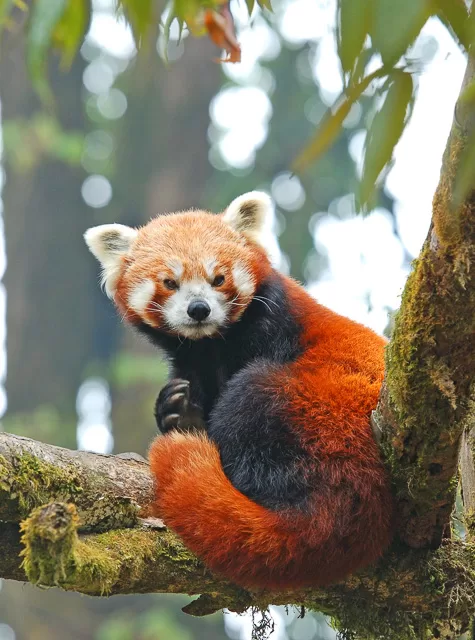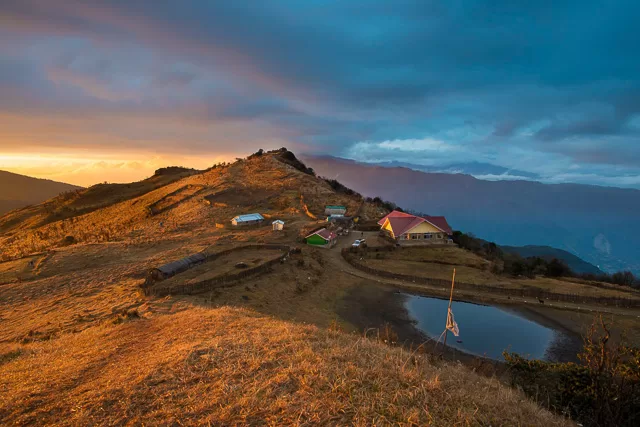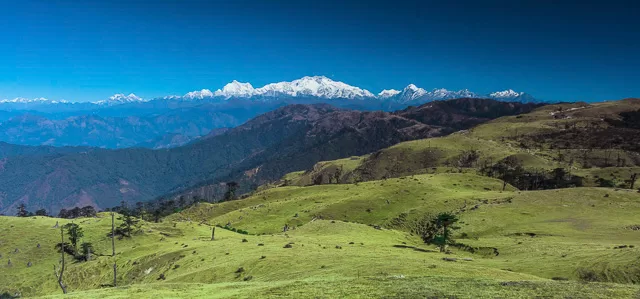About
Top Experiences
Type of Journey
Subscribe to newsletter and stay updated
Read about our travel expeditions, new destinations, new pictures, latest trip schedules
The Singalila National Park abounds in exotic species of birds and is, therefore, one of the most popular destinations on birdwatchers’ must-visit lists. It is home to several unique and rare species of birds, like the Satyr Tragopan, Blood Pheasant, and the like. Moreover, this is the base for the Asian Panda Tour to spot the elusive red pandas. The peak in this region is named Sandakphu, which translates into “Peak of the Poison Plants.”. It has been named so because of the bloom of some poisonous genera of plants in the nearby area. ‘Aconitus’ is one such perennial shrub. The roots of this plant have been used as medicine since time immemorial. However, the leaves and bright purplish-blue flowers of this plant are lethal if consumed imprudently. Another such poisonous plant found near the Singhalila National Park is the ‘Himalayan Cobra Lilies’.
On a clear morning, in the wee hours when dawn breaks, four out of the five highest peaks of the world can be seen as part of an unworldly panoramic view. This is what makes this hamlet a must-visit in the eastern Himalayas.
OVERVIEW
Location: Darjeeling District, West Bengal, India
Nearest Airport: Guwahati airport
How to reach: 4 hours from Bagdogra airport
Famous for: 4 of 5 highest peaks seen from the top, exotic birds and red panda
Best time to visit: Oct to Apr
WHAT TO SEE
Mammals: Red Panda
Birds: Satyr Trogopan, Blood Pheasant, Shortwings, Blue-fronted Robin, Cutias, Ward’s Trogon, Crossbills, Parrot bills, Golden fronted fulvetta, Darjeeling Woodpecker, Bullfinch, Fork tails, Fire-tailed Myzornis, Rufous fronted tit
Singalila National Park is located in the extreme northwest of West Bengal. It forms the border with Nepal and is a high-altitude protected forest region. The popular Sandakphu trek is through Singalila National Park. The Singalila ridge from north to south is covered with thick bamboo, oak, and rhododendron. The tricks start at Manebhanjan, located 30 km away from Darjeeling. One of the most popular birding treks extends from Manebhanjan to Sandakphu and back, with halts at Gairibans, Tumling, or Tonglu.

The Singalila National Park is spread over 79 sq. km. and is famous for its rich flora and fauna. It is home to the endangered red panda. The park is a birdwatcher’s paradise with rare species like the beautiful scarlet minivet, fire-tailed myzorn, Satyr tragopan, Kalij pheasant, Blood pheasant, White-throated Redstart, Plain-backed Thrush, Rufous-vented tit, Fulvous parrotbills, Golden-breasted Fulvett, and many more. It is home to more than 160 species of birds, and many varieties of migratory birds also fly to this region.

The incredible view stretching from the west to the east consists of mountain peaks from Nepal, Tibet, Sikkim, Bhutan, and Arunachal Pradesh. Watching the sunrise with its red, pink, and golden hues on the snowy mountains is an exhilarating experience in itself. The picturesque scenery makes for a breathtaking experience.

The most spectacularly visible peaks at sunrise include Sleeping Buddha(Mt. Kanchenjunga, third-highest), Mt. Everest (highest), Lhotse (fourth highest), and Makalu (fifth highest).

The trek to Sandakphu is one of the most beautiful treks in India. It is a moderate to easy trek and is loved by trekkers from all across the globe. Guests must not confuse trekking with mountain climbing or rock climbing. Trekking is simply another word for walking or hiking in the mountains. Relatively fit individuals can easily trek to Sandakphu, with 2-3 breaks.

A sturdy 4*4 SUV is the best way to go up for birdwatchers. The roads are dotted with numerous loose boulders, precarious bends, and steep ascents. Therefore, tourists must be careful while driving up to Sandakphu.
